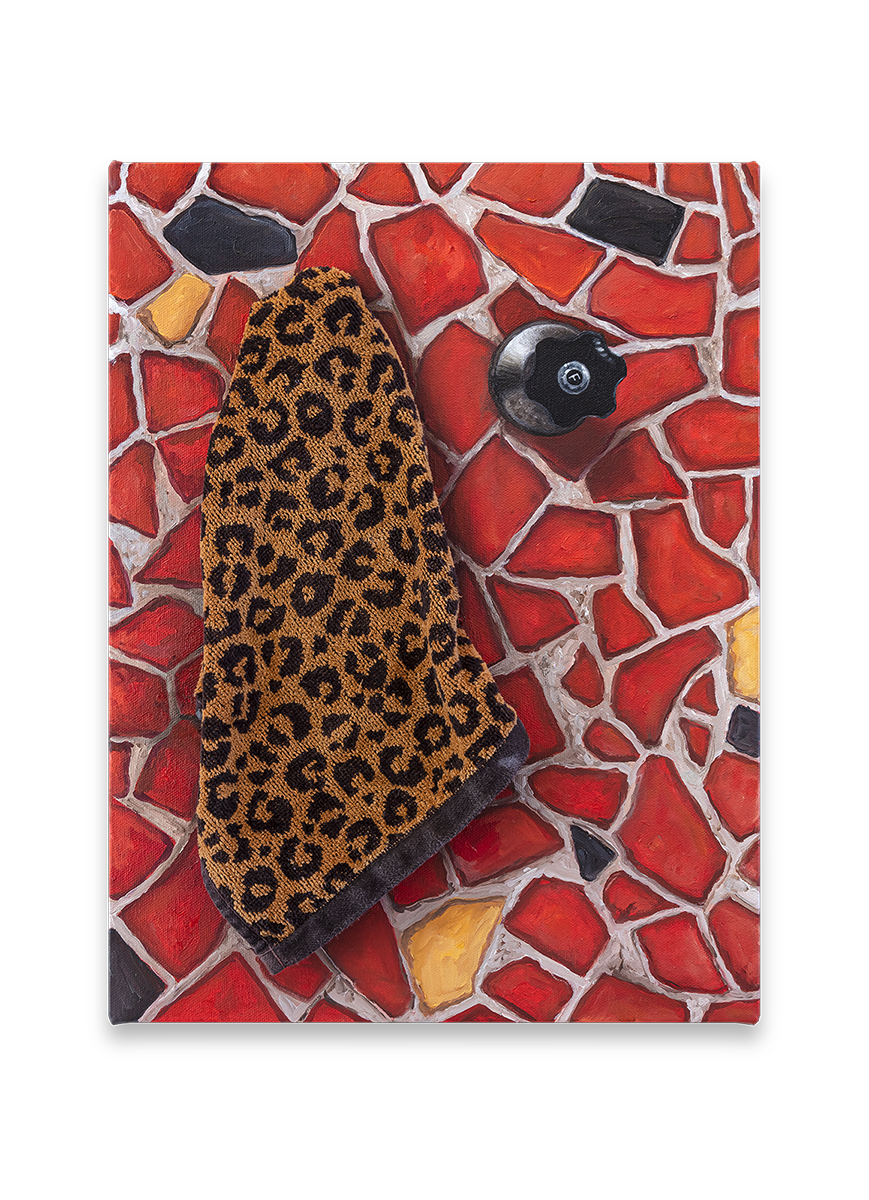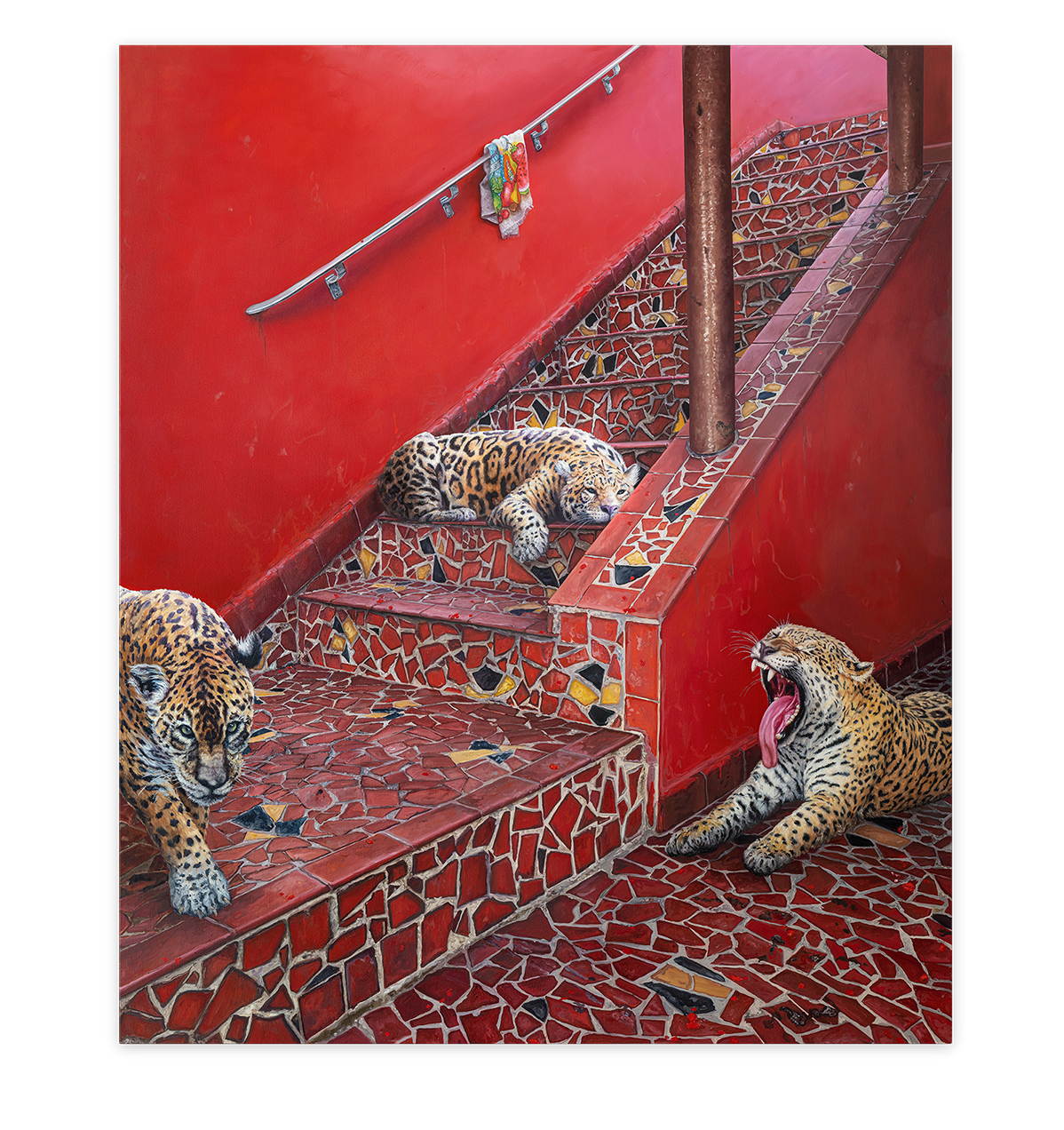For ZONAMACO 2024, Galeria Leme and Galeria Livia Benavides 80m2 present a joint project that tackles the diversity of their collections. Eight artists were selected to participate, stemming from a mutual interest in celebrating Sandra Gamarra’s representation of the Spanish pavilion at the 60th International Venice Art Biennale.
For the occasion, the galleries showcase Sandra Gamarra’s work “Fatima”(2008), a large-scale piece that was exhibited in her show “At the Same Time (Al Mismo Tiempo)” at the BASS Museum in Miami in 2011. The triptych depicts three individuals kneeling before Alexander Calder’s sculpture “The Tree” in the garden of the Beyeler Foundation in Basel. According to Max Hernández-Calvo, Gamarra simultaneously uses the triangular shapes at the base of the sculpture to reference Peruvian religious art from the colonial era, where painting a triangle represented both the Virgin Mary and the indigenous mountain deity, Apu Wamani. However, Hernandéz-Calvo suggests that the use of Calder’s abstract geometric piece points us forward in time, towards modern art. Connecting two domains of art and religion, it raises the question: what allows us to consider the work of art as such, as opposed to a cult object?
Galeria Leme will showcase recent productions by Ana Elisa Egreja, Rebeca Carapiá, and Frederico Filippi. Among them are three paintings from Ana Elisa Egreja’s series “Caquinhos e panos de prato,” where the artist revisits previous works, rediscovering a process of using assemblage to achieve three-dimensionality in her pieces. Her focus is still on depicting the affective memory of interior spaces; however, nostalgic elements are within reach. They are real and stare directly at you, challenging you to grab them and jump down the rabbit hole. Stemming from the syntax of a shattered ceramic flooring popularized in Brazil during the 1940s and 50s, the red tiles serve as a backdrop for a fantastical setting where dish towels are main characters. Egreja achieves this by repeating, blending, and materializing symbols to converge formal elements of painting with a newfound Brazilian kitsch imagery.



Rebeca Carapiá’s series “Sustento” presents sculptures in sinuous forms that both consolidate and experiment with the complexity of her creative process. The artist stems from a place of creating suspended objects that should present themselves “better” in space, but, from their very own nature, invite tension, imbalance, and impermanence. Through her imagetic vocabulary, Carapiá uses the materiality of these pieces to explore how our bodies in the world, their exhaustion, and desires are placed as elements in the present.
Frederico Filippi’s drawings explore the concept of Horror Vacui, a term used to describe the fear of having or leaving an empty space. This term was adopted by visual arts during the Victorian Era but also reflected the sentiments of cartographers who used to draw ornaments to fill unknown corners of maps. In the series, Filippi is inspired by the fictional and fantastical drawings of maps, where routes were labyrinths and protagonists could be monsters created by sailors who feared the unknown. Thus, he deals with the idea of disorder and disorientation that contradicts the notion of order created by modern civilization.
The selected artworks reflect these artists’ diverse and multifaceted production, showcasing their ability to engage with various domains through their creations. Additionally, they exemplify the rich diversity within the gallery’s collections, which are intricately interconnected between Lima and São Paulo.